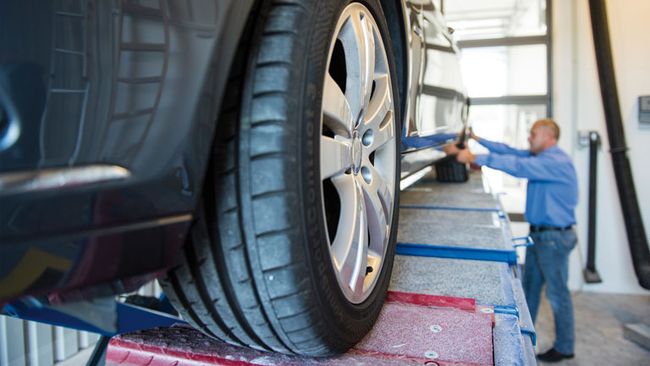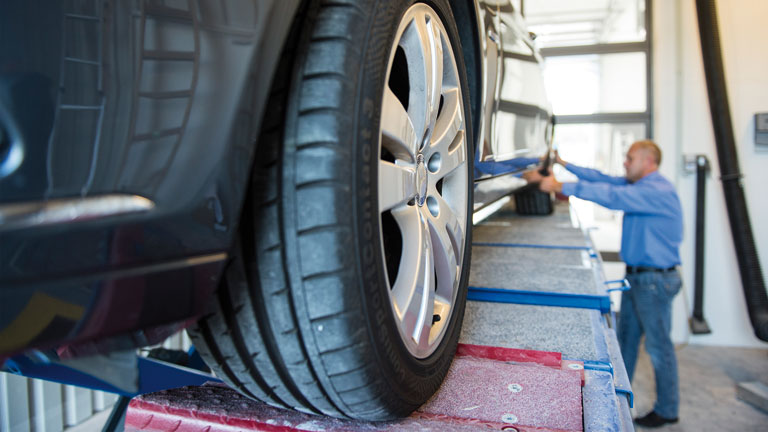



In the last ordinance on safety testing (SP), the legislator reduced the amount of tests to be carried out on new vehicles. You can learn who is eligible to test, how the test works and what is documented right here.
Testing intervals Testing intervals The previously safety test known as BSU and ZU was a visual inspection, impact and functional test for commercial vehicles.
This sets the SP safety test apart from "All-round testing". It concentrates on important components that are prone to wear and susceptible to failures, that exert a significant influence on vehicle safety and environmental impact. This includes the chassis, the underbody, the tow coupling, steering wheel, tyres and wheels, exhaust system, the brakes system and the closing forces on power-operated doors.
If the vehicle has a defect it receives a test mark. The test mark is attached to the back left of the vehicle on the inspection sticker. The arrow of the mark points to the month in which the vehicle underwent the safety test. On the inspection sticker, the last seven figures or symbols of the vehicle identity number are indicated. Incidentally, the colour markings on the test mark are the same as the colours of the stickers for the main inspection and exhaust gas tests, yellow being for 2009, brown for 2010.
Your contact for safety tests
Get help or register for safety tests here:
- Officially recognised experts or auditors for vehicle transport at the technical test centres and test engineers at the monitoring organisations
- Certified automobile workshops
The corresponding recognition with authorisation to carry out safety audits is issued by the relevant highest state authorities or the centres appointed by them (trade guilds, vehicle guilds) Automobile workshops wishing to carry out a safety audit must fulfil the following prerequisites and conditions.
In-house brake test? TÜV NORD Mobility can help
Parts-tested test stands for brakes are specified for performing the brake test during the main inspection and safety audit. Workshops and fleet companies can – if they have no brake test stands of their own – have the test carried out at one of the TÜV NORD technical test centres or at a professional workshop registered as eligible for conducting such tests.
Purchasing a brake test stand is another option. This enables you to carry out main inspections and safety tests on your premises, either using TÜV NORD staff or by yourself: should you choose the latter course, you must bear sole responsibility for carrying out the safety test and for any resulting obligations arising therefrom.
Do you have any further questions about this topic? We look forward to your enquiries!
Documentation and checking: Important information for you
The vehicle owner must maintain a safety test book. At every safety test, the auditor prepares a test log and documents the results in a logbook. Vehicles obliged to undergo safety tests are adorned with the relevant plates and the test marks for the next due safety test are handed over. The safety test plate, 80 x 60 mm in size, is made from plastic or metal.
Unlike the main inspection the safety test does not distinguish between minor or major defects. Any defect detected has to be rectified, before the safety test approval can occur. If the owner misses the date for the safety test then the main inspection cannot be carried out. In this case, the auditor must carry out a safety test followed by the main inspection - limited only to the safety test check points.